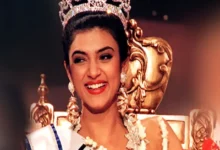The Best Undiscovered Treasures in Dwarka
Dwarka is a religious and culturally active city on the coast of Gujarat. Dwarka is home to historic Hindu temples and pilgrimage sites, but the city also has hidden gems that only an inquisitive tourist can discover.

Gopi Talav: A Place of Peace
Nestled in the serene beauty of nature, Gopi Talav awaits you at a short distance from the bustling city core. Hindu legend describes this picturesque lake as the preferred swimming place of Rukmini, the lover of Lord Krishna, and her companions, the gopis.
Surrounded by verdant gardens, the talav creates an impression of a tranquil sanctuary among the hustle and bustle of daily life. You may find serene locations surrounded by woods, where the sound of the waves gently caresses your mind. The diyas set up on these stairs begin to light up as night falls, symbolizing the spiritual essence of Dwarka.
Visit the Nageshwar Jyotirlinga and Feel the Divine
Despite its remote location from nearby homes, the Nageshwar Temple—one of the twelve Jyotirlinga temples to Lord Shiva recorded in Hindu scriptures—offers a profound sense of spirituality to anybody who steps foot on its grounds.
For some reason, entering a maze of winding stone passages that were constructed hundreds of years ago gives you the chills. Inside, there is a lingam where devotees quietly meditate, sending forth a mysterious energy that anybody may feel.
The experience left Manish with the impression that the lingam had a mystical quality. “I can’t put it into words but I felt its divine aura as I sat praying.”
While many visitors come to view Dwarkadhish Temple first, the true mystique of Dwarka may be experienced in Nageshwar Temple.
Explore the Mysteries of Love at Rukshmani Mandir
Located in Dwarka’s bustling market area lies the historic Rukshmani Mandir. Built to commemorate Lord Krishna’s loving queen Rukmini, this edifice dates back more than two millennia. According to the stone inscriptions and copper plates, it was constructed during the time when Dwarka was ruled by the Western Satraps.
A stunning idol of Rukmini, showcasing her slender physique and elegant demeanor, resides in the shrine, which has elaborate carvings. A part of Dwarka’s cultural fabric, the devotional chanting of prayers allows one to nearly feel the boundless love that she felt for Lord Krishna.
“The life-like Rukmini idol took my breath away,” Reetu added. “Beyond just Krishna’s mythology, the temple let me peek into Dwarka’s social and cultural past.”
Ancient Dwarka was formed by kings, customs, and belief systems; this location will provide light on all of them.
Fourth, Visit the Mysterious Gomti Ghat to See an Evening Aarti
Located in Dwarka on the banks of the Gomti River, Gomti Ghat is a site of several ancient temples. Floating diyas, ringing bells, and devout chanting transform the ghat into a spectacular sight as night falls.
“The weirder the better.” Vaishali gave the signal. She loved it so much because it was a religious ritual in which priests would spin incandescent lights while worshippers sang mantras in harmony. Unsurprisingly, she had been seeing the aarti at sunset while cruising down the river. “The sounds, lights and silhouettes synchronized to create a surreal divine spectacle.”
It is stated that Lord Krishna’s royal court was situated on Beyt Dwarka Island, which is thirty minutes by boat from the shore of Dwarka. Guests may get a sense of the lifestyle of the people who lived in Lord Krishna’s palaces from the ruins that dot the island.
West of Dwarka, on the Arabian Sea, lies the cliff known as Dunny Point. You can enjoy the breathtaking vistas without having to fight your way through hordes of other tourists at this location.
Gather Divine Yellow Sand at Gopi Chandan Site
The unusual Gopi Chandan sand from Dwarka is so mineral rich that it stains the skin a brilliant yellow. Myth has it that the Gopis, devotees of Lord Krishna, found this sand while paying homage to him and began using it as a beauty paste.
The sand that the river Hiran washes into the sea has a lemonade yellow color, and devotees trek two kilometers to get it from Dwarka Beach. You may carefully excavate the places indicated by the authorities using only your hands. There will be faint lemon yellow streaks in the removed lumps.
Praying ceremonies use this gritty sand because it is thought to contain the blessings of Lord Krishna. On Janmashtami, his birthday, devotees gather it in particular to pray for him.
Bhadkeshwar Mahadev’s Submerged Shrine 6.
A one-of-a-kind marvel of Dwarka is the centuries-old submerged Bhadkeshwar Mahadev temple, which is dedicated to Lord Shiva. Most of the temple, which was originally constructed on land but is now submerged owing to geological changes and the gradual rising of sea levels, remains underwater.
At low tide, sightseers may make out a number of interesting artifacts, such as carved pillars and a sanctuary enclosure with a tower on top. Rare low tide days bring throngs of devotees rushing to the sanctuary, where they hope to get a sight of the swaying deity icon of Lord Shiva, which is frequently concealed by saline seas. At sunset, the sound of bells, the swirling smoke of incense, and the light of candles cast an otherworldly glow against the lake.
As they pay their respects, believers experience a transcendent sense of joy at seeing nature’s rediscovery of a once-thriving site. Its ancient magnificence as a renowned Hindu pilgrim halt before it sank in the Arabian Sea is brought back by standing fast with few surviving ruins against severe saltwater winds.
Okha Port: A Glance at the Fishing Heritage
Okha harbor, located far from Dwarka’s most visited tourist attractions, showcases the town’s rich fishing history. Ancient rituals are still vital to the survival of this area, as shown in the vibrant and bustling waterfront where fisherman are busily sorting shellfish.
For those interested in cultural discoveries, there is a large fish market with piled cages and auctioneers going about their business. Trawlers are moored in the water. As shoppers bargain for the day’s haul, a dazzling array of seafood, including prawns, lobsters, pomfrets, and mackerels, glistens on beds of crushed ice.
There are broken boats lined up along the sandy coast as you go near the port entrance. Fishermen are fixing their ragged nets, ready to set sail again when darkness falls. Tourists may sample the tangy native tastes at seafood restaurants that use the freshest items from the catch. Although it is far from pilgrimage sites, Dwarka’s Okha harbor provides a genuine opportunity to explore the city’s rich maritime history.
8.Drawing Attention to the Mysterious Aspect
Dwarka throbs with magical land and seascapes beyond its well-known temples and popular folklore. Discover a side of the city that most tourists miss by visiting these lesser-known spots, such as serene lakes and shrines and mythical ruins.
The lesser-known attractions of Dwarka reveal a vibrant history that coexists with modernity, from golden beaches that retain their original luster to port communities that still practice traditional fishing methods. Feel the passage of time rumble under your feet as you go through buildings that nature is reclaiming, releasing historical artifacts while clinging to their timeless allure.
Incorporating such activities within your schedule will allow you to really immerse yourself in Dwarka’s culture, going beyond just seeing temples. Step away from the typical tourist traps and uncover hidden gems; forge a bond with the myths that captivate listeners; and experience the world as no one has before.







